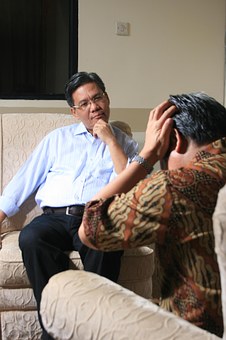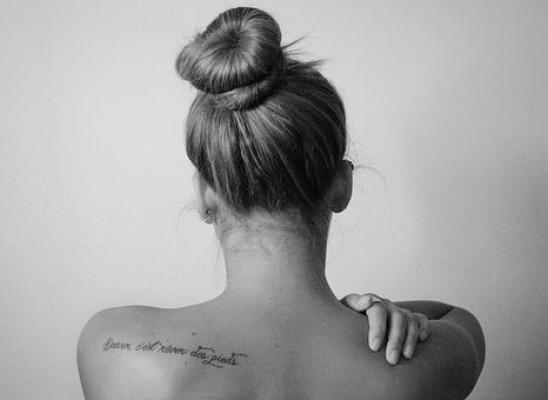Focused Versus Automatic Picking

Online test
Find out the severity of your symptoms with this free online test
 Every person develops their own technique for handling the stress and tension that comes with daily life, but for up to 5.4% of the population, the most their response can cause permanent skin damage or disfigurement. These are people suffering from a disorder known as dermatillomania, which is also known as excoriation or simply compulsive skin-picking disorder.
Every person develops their own technique for handling the stress and tension that comes with daily life, but for up to 5.4% of the population, the most their response can cause permanent skin damage or disfigurement. These are people suffering from a disorder known as dermatillomania, which is also known as excoriation or simply compulsive skin-picking disorder.
In the most simplistic of terms, this is a repetitive behavior that forces sufferers to focus on certain parts of their body due to an extreme urge to pick and pull at real or imagined marks. They may pick at moles, acne and freckles, or they may pick at perceived spots or marks that others cannot see. While most sufferers pick at their face or neck, the fingers and other parts of the body are often impacted as well.
When you look at dermatillomania from the more complicated view of a sufferer, this is a life-altering condition that often interferes with their ability to enjoy healthy relationships. In some cases, it may even stand in a sufferer’s way of professional success. While the behavior is associated with obsessive-compulsive disorder, anxiety, and depression, it’s possible to have dermatillomania without any of those added conditions.
If you or someone you love is compelled to pick to the point of drawing blood and leaving scars, it’s important to understand the two primary forms of dermatillomania: focused and automatic. This information is also of value to the general public so that a greater understanding of this body-focused repetitive behavior can develop.
Two Types of Skin Picking
The Diagnostic and Statistical Manual of Mental Disorders, commonly called the DSM, is the official guide to mental disorders used by most mental health practitioners. The fifth edition of the manual included the first official reference for dermatillomania. While establishing the diagnostic criteria for professionals to follow, the manual identified two forms of this condition:
Focused: picking is a conscious act
Automatic: picking is an automatic, unconscious behavior
This distinction is important because it describes the ritualistic patterns into which sufferers fall. For some, picking is an automatic behavior that they often don’t realize they are performing until they start to bleed or they experience severe pain and injuries from the behavior. This is the automatic form of dermatillomania. Sufferers practicing the focused form of this condition are aware of their picking, but they’re driven to the behavior by an intense itching or craving for an emotion that they feel during or after the act. They may experience intense urges to pick just as other people may have the urge to eat a cupcake when it’s placed before them. Once they start picking or pulling, it’s difficult to stop.
Blurring the Lines
While some sufferers may fall completely into one category of either focused or automatic picking, many experience both types of ritualistic behavior at different times. For some, the behavior starts out automatic but turns into more of a focused act once attention is drawn to their picking or an official diagnosis is revealed. Still others may know that they’re picking at times while at other times it’s an automatic response to stress, anxiety, boredom, or a variety of alternative emotions.
This is an emotional disorder, and many sufferers are driven to pick their skin in response to anxiety or mental distress. For some, this is a repetitive pattern that accompanies other symptoms of obsessive-compulsive disorder. Still others report feeling pleasure, relief, or other emotions during and/or after a picking session. While some people may acknowledge the emotional aspects of their condition, many need some help identifying how they feel and what emotional rewards they’re receiving in exchange for their behavior.
The Importance of Treatment
Anyone ritualistically and repetitively picking their skin to the point of developing scabs, scars, or even infections may feel  a high level of embarrassment surrounding this behavior. It’s common for sufferers to hide the physical damage from others, especially if they don’t realize that this is a recognized mental disorder and that there are others experiencing the same condition. They may wear long sleeves or long pants even in hot weather, and many will avoid shaking hands or other social situations that may draw attention to their scabs and scars.
a high level of embarrassment surrounding this behavior. It’s common for sufferers to hide the physical damage from others, especially if they don’t realize that this is a recognized mental disorder and that there are others experiencing the same condition. They may wear long sleeves or long pants even in hot weather, and many will avoid shaking hands or other social situations that may draw attention to their scabs and scars.
Many sufferers find it difficult to discuss their condition with their doctors, and some are discouraged when they realize that their doctor is dismissive or downplays the significance of the condition. Many doctors are still uneducated about dermatillomania, and others don’t understand the severity of skin and mental damage that results from the condition.
Persisting until treatment is received is essential because it’s the only way to end the emotional roller coaster that goes along with this condition. If you notice that skin picking is interfering with a healthy, fulfilling lifestyle for you or someone you care about, it’s time to seek out professional treatment so that you can enjoy a peaceful mind and a stable, successful life.
If your primary doctor isn’t educated about the condition, do some research online to find a therapist or psychologist in your area with experience treating other dermatillomania patients. You can then go directly to that practitioner or ask for a referral from your doctor if that’s required by your insurance company.
The Most Effective Dermatillomania Treatment
Most Dermatillomania sufferers will try to curb their skin picking on their own, and they will fail repeatedly. Many others will never try to stop the behavior because they aren’t aware of the psychological aspects of picking or the dangers to their body if they continue. This is why it’s important for sufferers to seek professional treatment with a therapist or psychologist who is able to help them recognize the severity of their behavior and the consequences to come.
This isn’t a condition that is easily solved with medication, but research is showing that even short-term cognitive behavior therapy (CBT) is an effective treatment option. This is a unique form of talk therapy that deals with thought patterns, emotions, and behaviors that are occurring in the present. Rather than focusing on your childhood or talking for hours about things that happened in the past, the focus is on exploring and overcoming problems currently impacting your life.
Dermatillomania sufferers can use CBT to increase awareness regarding all aspects of their condition. Those suffering from automatic behavior will recognize what they’re doing to their bodies while identifying what may drive them to pick at their skin mercilessly. Those with some level of awareness of their condition may benefit from understanding their motivations on a deeper level and actively working to stop the behavior.
The ultimate goal of CBT is to help all sufferers enjoy healthy lives. This includes fulfilling relationships with others and successful careers. While it may seem impossible to overcome this condition before you enter treatment, it doesn’t take most sufferers long to realize that they can overcome their skin-picking inclinations with the proper help.
Habit Reversal Therapy
Habit Reversal Therapy, often referred to as HR, is a form of CBT that involves the following process:
- Drawing conscious attention to a target behavior as it occurs in daily life
- Immediately replacing the target behavior with a healthier behavior
 This therapy is used to treat many forms of repetitive behavior that has become troublesome for the sufferer. For those with dermatillomania, the ultimate goal is to bring automatic skin picking into conscious view so that it is openly recognized and replaced with a more positive and functional behavior. Most people will need the help of trusted loved ones who are willing to point out skin picking that the sufferer doesn’t consciously recognize. It’s important that this is done immediately so that the picking is consciously stopped and replaced by the new behavior on the spot. When this process is repeated consistently over time, automatic skin picking becomes more conscious and the sufferer takes control of the condition.
This therapy is used to treat many forms of repetitive behavior that has become troublesome for the sufferer. For those with dermatillomania, the ultimate goal is to bring automatic skin picking into conscious view so that it is openly recognized and replaced with a more positive and functional behavior. Most people will need the help of trusted loved ones who are willing to point out skin picking that the sufferer doesn’t consciously recognize. It’s important that this is done immediately so that the picking is consciously stopped and replaced by the new behavior on the spot. When this process is repeated consistently over time, automatic skin picking becomes more conscious and the sufferer takes control of the condition.
Taking Control of Dermatillomania
Rather than feeling controlled by dermatillomania, habit reversal therapy allows sufferers to feel empowered. What once felt like an embarrassing habit that could never be stopped is suddenly a replaceable behavior that they are determined to overcome. While this is a condition often deeply rooted in anxiety or the need to compulsively repeat behaviors for an emotional payoff, understanding and routine therapy can make a dramatic difference in the lives of all sufferers. When you or someone you care about is ready to stop hiding and start facing this condition head on, effective treatment is available.
Source
http://ocdla.com/compulsiveskinpicking
/node/3587
http://www.canadianbfrb.org/2014/05/20/dsm5excoriation/
https://www.elementsbehavioralhealth.com/drug-abuse-addiction/compulsive-skin-picking-dermatillomania-2/
http://www.skinpickingsupport.com/2013/01/09/12-dermatillomania-myths-dispelled/
http://devpsychopathologyru.nl/wp-content/uploads/2012/10/2012-Schuck-The-effects-of-brief-cognitive-behaviour.pdf
http://www.nhs.uk/conditions/dermatillomania/Pages/Introduction.aspx
http://www.nhs.uk/conditions/cognitive-behavioural-therapy/Pages/Introduction.aspx
http://www.med.nyu.edu/child-adolescent-psychiatry/news/csc-news/january-2015/habit-reversal-therapy-approach-managing-repetitive-behavior-disorders
Online test
Find out the severity of your symptoms with this free online test
Start your journey with SkinPick
Take control of your life and find freedom from skin picking through professional therapy and evidence-based behavioral techniques.
Start Now



